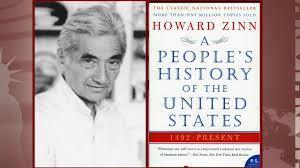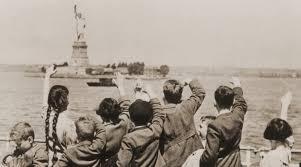(My Black History Month essay)
America is a divided country — two sides seeing things very differently. Naturally enough that includes history. Interpreting the past shapes one’s current perspective.

One side focuses on correcting what it considers a sanitizing of American history. Thus “The 1619 Project,” emphasizing the centrality of slavery. There’s also genocidal mistreatment of Native Americans, and much else, to portray a history of infamy. The other side deems this unpatriotic, and seeks to restore a positive narrative, epitomized by Trump’s 1776 Commission and Mount Rushmore hagiology. To defend the “nobility of the American character” (said the most ignoble character in U.S. history). But such voices too often centralize whiteness and Christianity, sacrificing for that all other values — and our history’s true meaning.

The divergent viewpoints were discussed in a Washington Post essay by aptly named history teacher Daniel Immerwahr (German for “always true”). Regarding whether students should learn of America’s virtues or its shortcomings, he ended by saying the aim of teaching history isn’t for them to love or loathe their country, it’s to prepare them to live in it.
That should include civic engagement, for which an understanding of history is indeed essential. And seeing both virtues and blemishes enables properly grasping the full picture. We cannot know where we’re going without knowing where we’ve been, and how we got where we are now. Thus Immerwahr describes “1619ers” as pushing us to live up to our ideals. Loving or hating America isn’t the issue. It’s how we go forward.

Some do talk as though slavery was our deep dark secret, hidden somehow like Mr. Rochester’s madwoman in the attic. But that history has always been very much in our faces. We fought our bloodiest war over it; and its literal descendants live among us.
So, yes, we did have slavery, and Indian atrocities, and WWII Japanese internment, and more. But are there countries whose histories read like fairy stories? It’s hard to think of any. Maybe Norway? Then again, a million Norwegians fled for the greener pastures of . . . America.

Immerwahr cites Howard Zinn’s infamous book, A People’s History of the United States. Which saw America as conceived in sin because we did not, immediately in 1787, abolish slavery, establish universal suffrage, liberate women, empower labor unions, and so forth. The book chronicled generations of Americans who battled for progress on all such fronts. While studiously omitting mention of any success. (Zinn did acknowledge women finally gained the vote, but dismissed that, saying they just voted like their husbands.)
But America has indeed progressed tremendously, becoming fairer and better. Look at gay marriage. Something Zinn neglected to gripe about. Because in 1980, when he wrote, nobody imagined it possible.
Such progress is America’s true central story. While much was wrong in the past, we established a system that, not set in stone, was conducive to positive change through citizen action. And it is in our national character to achieve that, with an ethos of democratic openness and dynamism. A character shaped by generations of people uprooting themselves to come here for their own betterment, like those Norwegians, thus infusing positive attitudes into our very DNA.

This is why I love and take pride in America. And America is really the best exemplar of a character imbuing all humanity. Here too cynics and pessimists press their indictments. But talk about sanitizing history — the “good old days” were squalid, even our prehistoric past no Garden of Eden. Ever since, we’ve made epic efforts toward improvement, with a degree of success once unimaginable. While bringing our worst instincts, too, progressively under control. This is history’s central story. Also filling me with love and pride.
